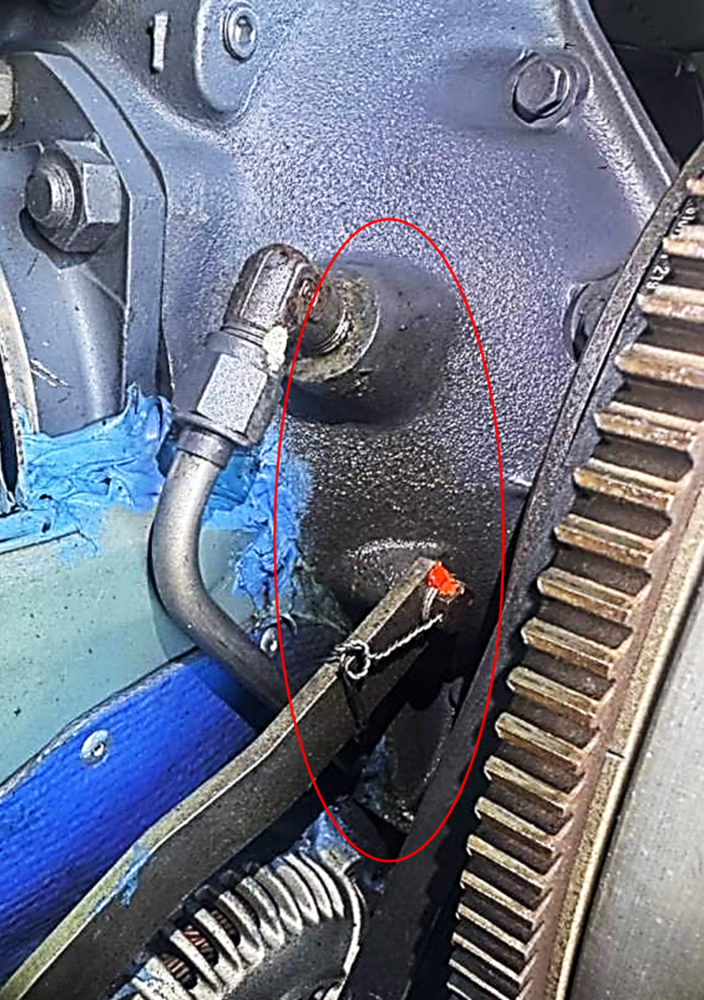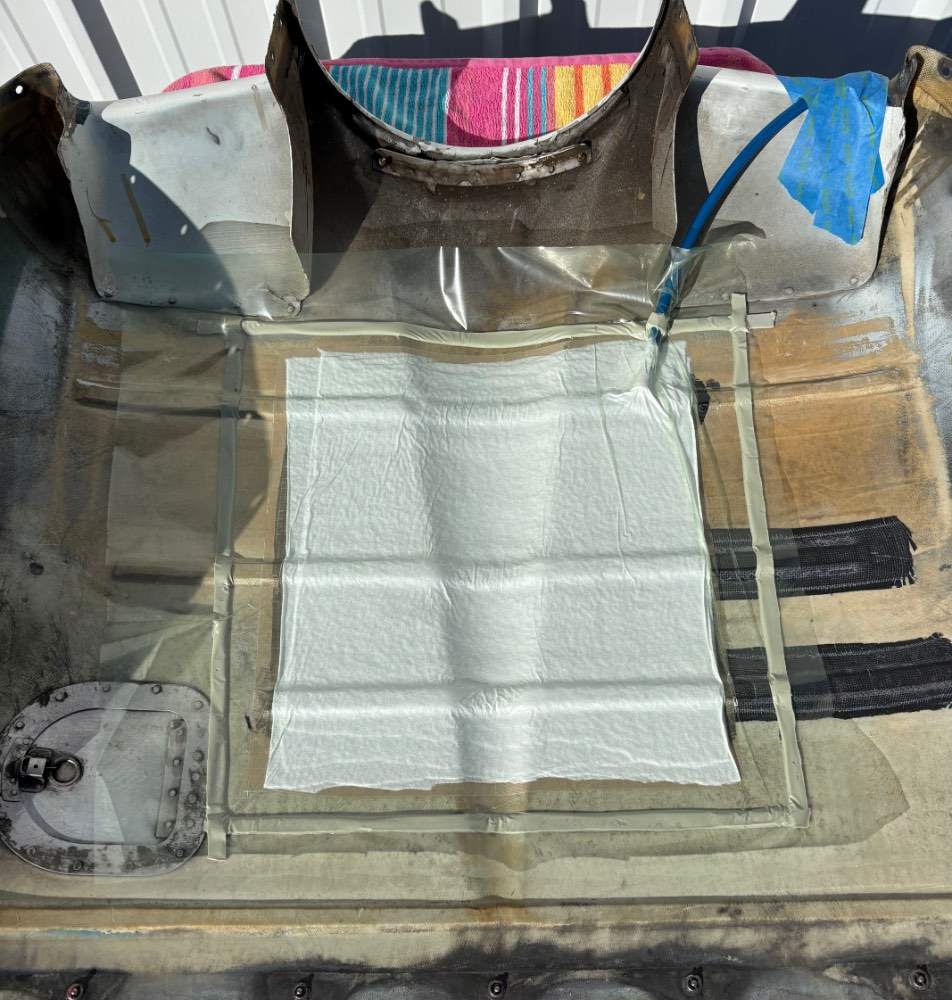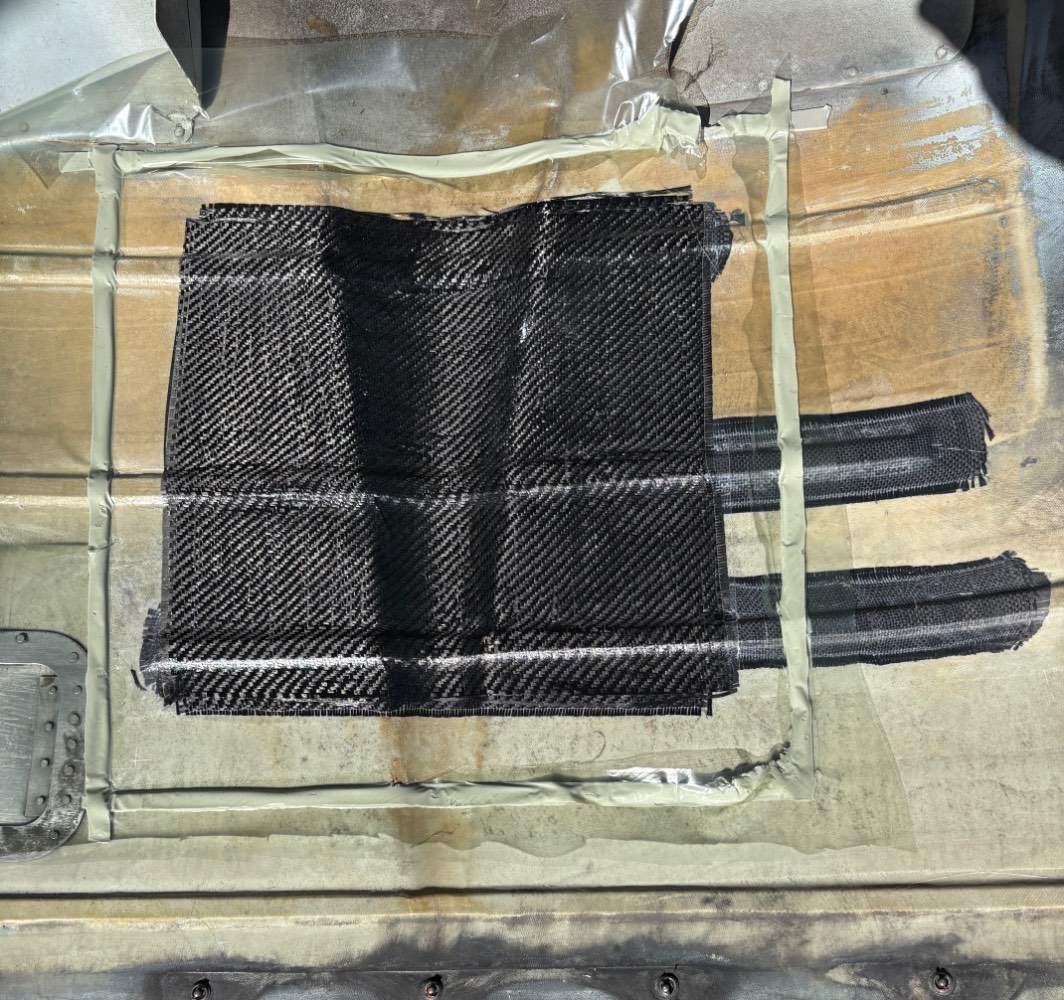All Activity
- Past hour
-
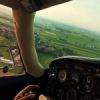
Diagnose my first oil leak after recent overhaul...
DXB replied to DXB's topic in General Mooney Talk
Try this one - cropped a bit, adjusted contrast, circled with red oval. You'll have to take my word for it that it is the only oil to be found on the engine or anywhere under the cowl. -
takair started following Diagnose my first oil leak after recent overhaul...
-
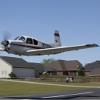
Diagnose my first oil leak after recent overhaul...
takair replied to DXB's topic in General Mooney Talk
What 47U suggested. See if the inside of the flywheel has a slime of oil in there. I had this happen after overhaul, in my situation it would occur every 30 hours…..it takes that long to build up enough to splatter. -
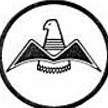
Diagnose my first oil leak after recent overhaul...
Shadrach replied to DXB's topic in General Mooney Talk
Well, if you can’t see where it’s coming from the only thing you can do is clean everything up and wait for a clearer (dirtier) picture to emerge. -

NEW NEWS FROM LASAR AND MOONEY AS OF 10/2/2025
LANCECASPER replied to cliffy's topic in General Mooney Talk
There are a lot of salvage Mooneys for donor parts - crashed airplanes and neglected airplanes. - Today
-
NEW NEWS FROM LASAR AND MOONEY AS OF 10/2/2025
Sabremech replied to cliffy's topic in General Mooney Talk
Once $28K came from ABS. The other $500K came from an estate specifically for overcoming the ruddervator skin issue. Maybe we need to form the American Mooney Society and as a group of owners and maintainers tackle our most pressing problems. Have the AMS work the parts that are needed and not available at true cost to the members. It could be setup as a not for profit entity for the benefit of its members. @cliffy Care to try something different than the promises generated by AI from LASAR? -

Diagnose my first oil leak after recent overhaul...
DXB replied to DXB's topic in General Mooney Talk
Prop was IRANd 140 hrs ago, same time as engine overhaul. Back of blades appear immaculate. -

Diagnose my first oil leak after recent overhaul...
Bartman replied to DXB's topic in General Mooney Talk
Mine leaked there after a few hours on my overhauled engine. The pipe threads were not very tight. A bit of sealant fixed it. I think it was just a small drop of Permatex Aviation. Mine did not spray, but it is always possible to have two leaks. -
I don’t blame you for getting the new alternator and you get a new bracket. That being said, when I installed my engine I ran a new field wire and coiled up a few inches of extra wire. The terminal at the alternator is prone to breaking due to vibration. I change the terminal every few years. Also like Yetti, my local alternator shop checked and cleaned my tractor alternator a few years ago.
-

Diagnose my first oil leak after recent overhaul...
Shadrach replied to DXB's topic in General Mooney Talk
When was the prop overhauled? Do you see any oil on the face (backside) of the prop blades? It’s hard to diagnose oil leaks online, but if I had to bet it would be on a blob of grease coming from the prop. Does not mean that the seals are herniated. Occasionally a prop hub will throw a little grease. It can atomize in the prop wash. -
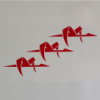
Diagnose my first oil leak after recent overhaul...
47U replied to DXB's topic in General Mooney Talk
Without an obvious leak after visual inspection, the crankshaft seal is the first place I would investigate. It’s hard to see, but run a clean paper towel underneath the crankshaft on the backside of the starter ring gear. If that’s clean, maybe pull the spinner and see if there’s any evidence of the prop leaking. The prop governor oil line fitting might be leaking a little, but I don’t think it’s the source of your spritz. Years ago, I had the same spritz on my C model (narrow deck) under the same flight conditions. It was the crankshaft seal. (The safety wire on the alternator support arm looks to be neutral… could be parallax in the view… ummm, I apologize for mentioning it.) -
Diagnose my first oil leak after recent overhaul...
Jsno replied to DXB's topic in General Mooney Talk
I would need to see another picture. This one shows nothing. -
NickM20F started following Diagnose my first oil leak after recent overhaul...
-
I’m requesting a little diagnostic input on the first oil leak to arise on my engine post overhaul. It is at 140 hrs and just under 11 months SMOH and has functioned flawlessly so far. Today, when I reduced power to idle just before landing, I got a sudden little spritz of oil mist on the middle of the windscreen. Upon landing, I noted a tiny bit of oil running back along the front of the top cowl. Upon examining carefully under the cowl, it appeared immaculate – no oil to be seen (so it must not be a big leak). The only exception is in the picture attached. There is oil that appears to be running down from the fitting connecting the prop governor oil line to the right front of the case. This is a strip of oil from the fitting down the right front side (pic attached). I don’t see oil anywhere else. Can one be confident the leak is from this fitting? If that’s the case, I’m a bit surprised there’s no oil blowing back across the base of cylinder #1. What is the best course of action here? I also wondered if the leak might be from the front crankshaft seal, but I would expect oil on both sides of the engine in that were the case.
-
So none of that demonstrates your ability to draw pictures in the sky.
-
NEW NEWS FROM LASAR AND MOONEY AS OF 10/2/2025
MikeOH replied to cliffy's topic in General Mooney Talk
Well, I don't know about better, but there are nearly twice as many Bonanzas as M20s...I would think that fact alone helps with the economics of part production! -
Nothing wrong with that. My comment was towards those that are somehow "impressed"; i.e. 'skill'
-
When I use the rocker on the autopilot head to change pitch, it seems slow to react -- both to start, and to stop once started. I feel like I'm chasing it up and down.
-
That sounds right. Every time I run my checklist, my notes get better, so I'll have to verify.
-
I meant to say I checked that the autopilot would respond to changes in the the heading bug, and after that, I'm reading my checklist for the next step, and the trim wheel starts moving -- apparently uncommanded. Not fast, but I can't figure out where it thinks it's going.
-
I'm no autopilot expert, but I did operate a KAP 150 for a number of years. As I recall the pitch behavior on mine seemed a little wonky (technical term) if I played around with it on the ground as you've described but it worked fine in the air. For my preflight checks I pulled the yoke back about half way, approximately to the cruise position, and engaged to A/P to confirm it would initially hold it there. I'd then hit the trim switches on the yoke to disengage, re-select A/P and HDG and twizzle (another tech term) the HDG bug back and forth to confirm the yoke moved appropriately, and use the big red button to disengage. Other than running the trim both directions manually and with the yoke switches, that was the only ground check for pitch that I did. With the airplane sitting on the gear in it's classic Mooney nose-high attitude the A/P is going to command pitch changes it thinks are needed to maintain level "flight", and that's what I attributed the A/P pitch inputs on the ground to. Using the rocker switch on the KC-191 with only A/P selected is telling the A/P to change the pitch up or down, so since the airplane isn't moving in pitch I think (?) the computer will continue to command a pitch change in the direction you told it to go until it hits the stop. Is that what you're seeing? Bad on me, I didn't check the left/right trim switches independently, or exercise the panel rocker switch as part of my checks. I trusted the computer self-test caught everything I didn't physically manipulate. Hopefully one of our King A/P gurus will be by shortly to provide you with a more complete answer and assessment of what you've reported. The delays and trim wheel behavior you describe don't sound familiar.
-
NEW NEWS FROM LASAR AND MOONEY AS OF 10/2/2025
Paul Thomas replied to cliffy's topic in General Mooney Talk
Beechcraft has a better owner group than we do. They are organized and pooled their money to offer over $500,000 to a company could would produce new ruddervator below certain price point. -

NEW NEWS FROM LASAR AND MOONEY AS OF 10/2/2025
jetdriven replied to cliffy's topic in General Mooney Talk
But the prices have gone up 40% since pre-Covid so I’m not totally sold on this. I guess when the door seal gets to be $500 we can talk about it again. All of the price increases by the Hartzell family of companies (Arcline) was not related to supply and demand. -
Open Door In Flight training?
jlunseth replied to wombat's topic in Mooney Safety & Accident Discussion
Two stories re this topic. One, when I picked up my plane at purchase it was in AZ and we (my non-Mooney instructor and I) flew it all the way home to MN. An annual had be badly done in AZ, and on takeoff the door came open even though it was latched. Landing and closing the door did not help, same result. We tried the procedure in the POH and could not close the door. The good news is that the slipstream is strong enough that nothing is going to happen, no one is going to fall out, it is held very strongly in place. In the paper days you had to make sure one of your charts did not get sucked out, but that is the worst that can happen. The bad news is that the slipstream won't allow the door to close either. We flew over Raton at 16k, it was cold and somewhat noisy with the door in that condition, and all the way to Garden City where we convinced the door to latch and held it in place during takeoff. It was subsequently discovered that the latch was not adjusted properly and I have not had a problem with it since then (2009). So I completely agree with 201er, forget the door. If you get in a bad situation as a result of the door coming open that is because you panicked and failed to continue to fly the plane. As for the baggage door, I had a friend and famous aviator decades ago who took off from a field in ABQ that is not there anymore (Coronado) to fly his family to Taos for some skiing. It was a twin with the baggage door forward in the nacelle. The door came open on takeoff and they did not survive. The pilot tried to return to Coronado to land, but was unable. There have been several "the baggage door came open in flight" incidents on this forum over the past 14 years since I joined it. I recall one in which the door departed the fuselage and made the rest of the trip lodged in the horizontal elevator. He made it all the way across the Atlantic in a the first ever balloon crossing only to perish about three or four years later in an avoidable fixed wing accident. So here is my rule. I always, always include the door in my pre-flight, and no one except the pilot is allowed to close and latch that door. I always lock it, and check that I locked it, following advice from a couple of the instructors at Mooney PPPs. I had one girlfriend years ago who would get very offended that I would not allow her to close the door, and she would purposely try to open and close it herself. Not my girlfriend anymore (not the only issue). Don't worry about the safety on the inside, that will work when you pull the pin even if the door is locked. The chances of getting back there and out the door in a forced landing situation are not that great anyway. As we all - I hope - learned in beginning pilot school, one of the very important items on the off field checklist is to open the main door while still in the air and shove something in it to keep it open so it can't jam shut on impact. Then you won't need the baggage door anyway. -
Decided to put two more squares of cloth weave to clean it up and give it a more finished look. Final results with the vacuum bagging layers removed. Still had to remove the sealing tape. I had it sitting in the sun for the heat to accelerate the curing process but the sealing tape became very sticky and needs to cool before removal.
- 64 replies
-
- 1
-

-
- carbon fiber
- fiberglass
-
(and 2 more)
Tagged with:
-

NEW NEWS FROM LASAR AND MOONEY AS OF 10/2/2025
Schllc replied to cliffy's topic in General Mooney Talk
What isn’t 30% more expensive that it was in 2020? Most things are a lot more than 30%! Everything in the grocery store is double or more, and they have cut portion sizes.

